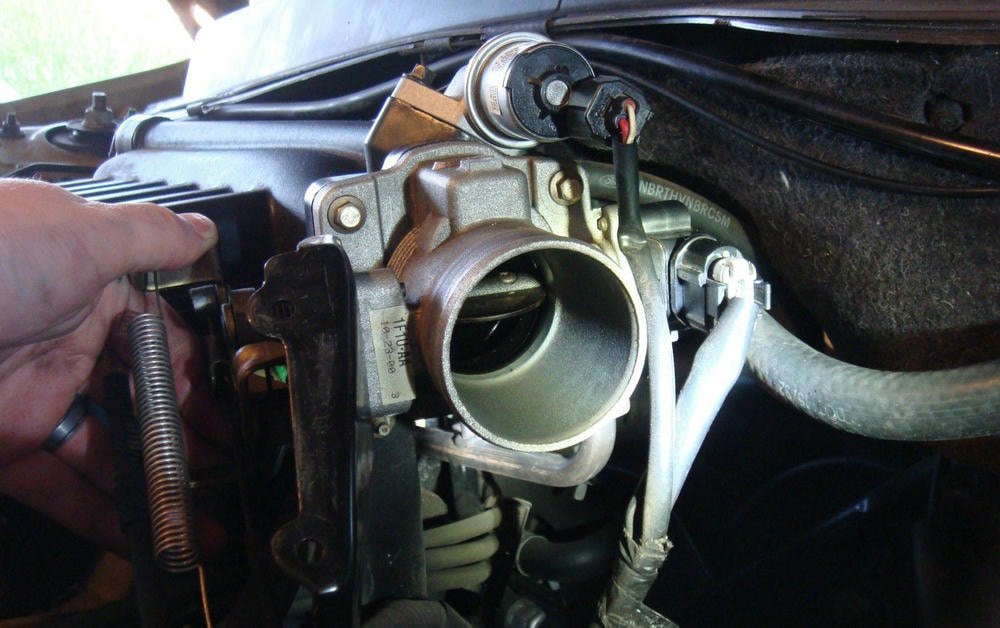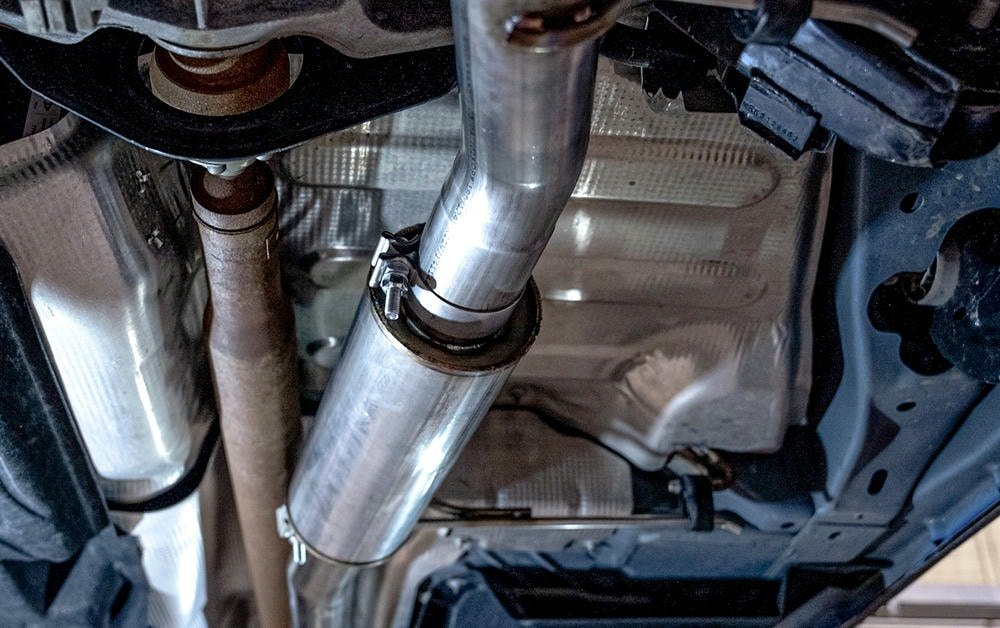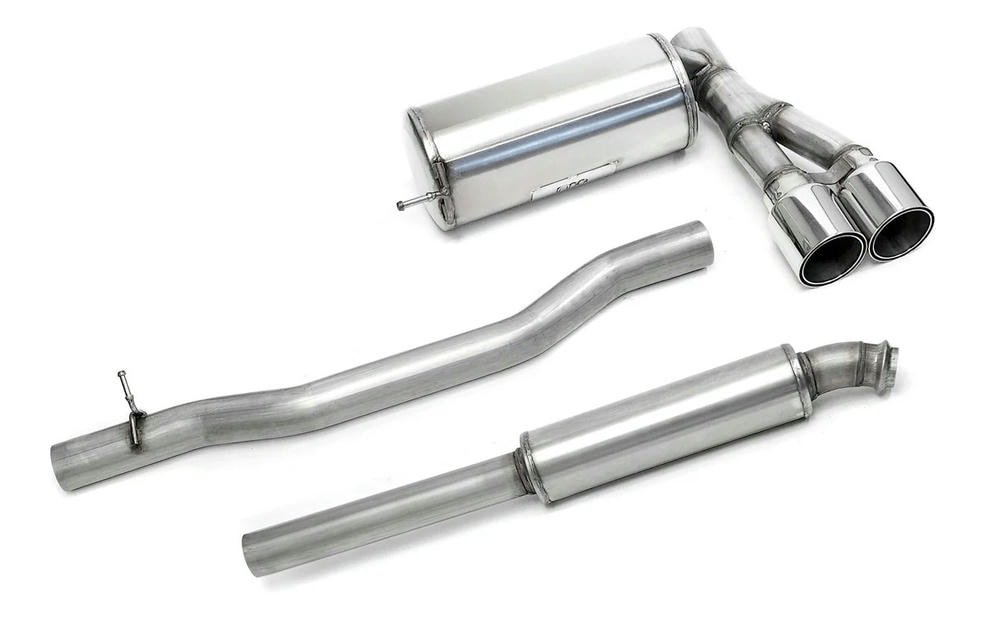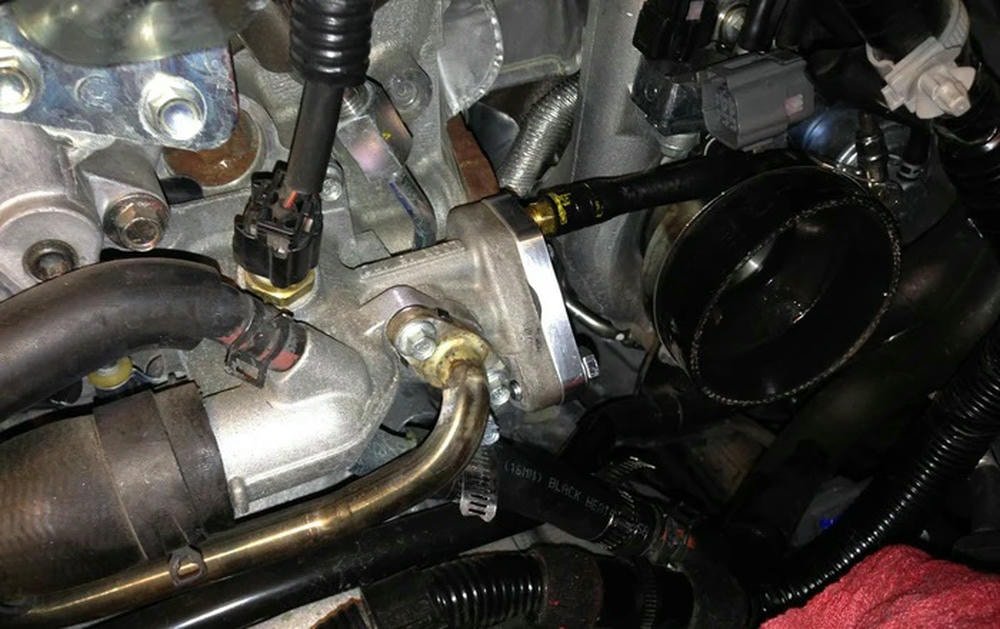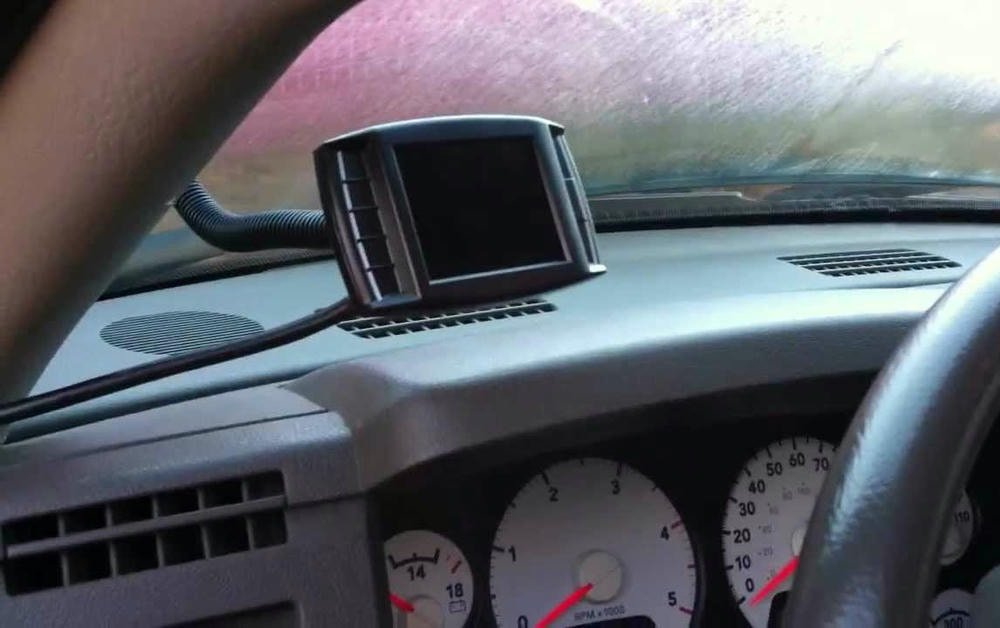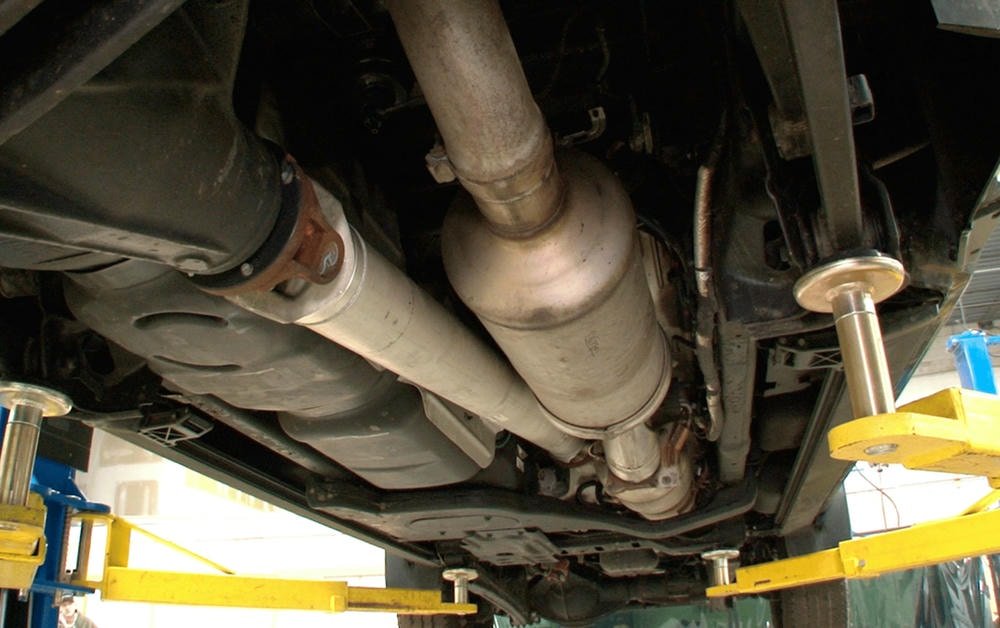This article talks about how engine sensors und wiring systems work. Engine sensors gather details like air flow, temperature, and exhaust gases. They send this information to the ECU (Engine Control Unit).
This helps make the fuel mixture and timing better for the engine’s performance. Wiring systems are key because they connect sensors to the ECU. Good wiring means clear signals while bad wiring can lead to poor performance.
Grounding and shielding in wiring help protect against electrical problems and signal interference. This makes sure sensors work well by keeping data moving smoothly. Knowing how these parts work together is important for Diesel-LKW owners wanting to keep their vehicles running well.
Let’s explore more.
Inhaltsübersicht
Umschalten aufHow Engine Sensors Work
Engine sensors gather data about how an engine runs. They send this information to the computer in a car, helping it make changes for better performance.
Data Collection and Signal Generation
Engine sensors are essential in obtaining data to guarantee the efficient operation of your diesel truck. Sensors such as the MAP (manifold absolute pressure) sensor ascertain the volume of air entering the engine.
Meanwhile, the MAF (mass airflow sensor) verifies the amount of airflow into your engine’s intake. Oxygen sensors are responsible for monitoring exhaust gases to evaluate the fuel mix, while knock sensors are deployed to detect any signs of engine detonation.
These sensors convert the gathered information into electrical signals. These signals provide real-time updates to the Engine Control Unit (ECU) about the internal workings of your engine.
For instance, if an imbalance exists between the air and fuel amount, an o2 sensor sends a signal to rectify the mix for improved performance.
Accurate data is the cornerstone of outstanding performance.
I once faced an issue with my diesel truck constantly stalling at idle. The issue was traced back to a dirty MAF sensor that was unable to provide a precise measure of air flow. After a thorough cleaning, my truck returned to its optimal operating condition.
This incidental knowledge demonstrated the pivotal role these sensors play in maintaining engine health.
Communication with the ECU
Sensors in a diesel truck collect data like temperature, pressure, and airflow. They then send signals to the Engine Control Unit (ECU). This is where electrical systems play a big role.
The ECU gets this information through Verdrahtungsanschlüsse. These wires are very important for making sure the engine runs well.
After getting signals, the ECU decides what to do next. It might change how much fuel the engine gets or adjust the timing of when fuel enters the cylinders. For someone who owns a diesel truck, seeing how these adjustments can make an engine run better is interesting.
Wiring systems help these changes happen smoothly by sending clear signals from sensors to the ECU and back again to parts like injectors or ignition systems.
Real-Time Adjustments for Optimal Performance
Die ECU uses data from MAP sensors and O2 sensors to make quick changes. This keeps the Dieselmotor running well. For example, if the O2 sensor finds too much fuel in the exhaust, the ECU cuts back on fuel use.
This helps with power and cuts down on emissions. The same goes for air intake measured by MAP sensors. If there’s too much or too little air, adjustments happen right away.
These changes mean better performance and less wear on parts like the catalytic converter and ignition system. Diesel truck owners see their vehicles run smoother and use less fuel over time.
Plus, real-time responses prevent damage that could lead to costly repairs later on.
How Wiring Systems Support Engine Function
Wiring systems make sure power reaches every part of the engine that needs it. They also send signals from sensors to the brain of the engine, making everything work together.
Power Distribution to Sensors and Actuators
In diesel trucks, power distribution is crucial for sensors and actuators to work right. The electrical system sends power from the battery to these parts. Sensors like the mass airflow (MAF) sensor and the exhaust gas oxygen (EGO) sensor need this power to measure air flow and oxygen levels.
Actuators, such as those in the throttle body or fuel injectors, rely on electricity too. They adjust how much fuel goes into the engine.
A truck owner shared that after upgrading his wiring system, his truck’s performance improved a lot. This shows how good wiring makes sure all parts get enough power without voltage drops or resistance issues.
Properly set up wires help engines run smoother and last longer.
Upgrading my truck’s wiring made it run better than ever.
Signal Transmission Between Components
Wires and relays play a big role in how parts of a diesel engine talk to each other. These pieces carry signals from sensors to the engine control unit (ECU). For example, a throttle position sensor tells the ECU how much power the driver wants.
The ECU then uses this info to adjust fuel flow and ignition timing for good performance.
Grounding and shielding are key too. They protect signals from noise, like unwanted electrical interference from other parts of the truck or outside sources such as radio waves. A mechanic once found that poor grounding was why a truck’s sensors gave wrong readings, leading to bad engine performance.
After fixing the wiring connections, the truck ran smoothly again. This shows how important proper signal transmission is for diesel engines to work right.
Importance of Grounding and Shielding in Wiring Systems
Grounding and shielding play key roles in diesel engine wiring systems. Grounding means connecting parts of the wiring to the earth. This move protects people from electric shocks and engines from damage.
Shielding covers wires to block interference from outside sources, such as electromagnets or other electronic devices. It helps signals stay clear and strong.
These methods ensure that power reaches sensors like the manifold pressure sensor without any issues. They keep data moving smoothly between the engine control unit (ECU) and parts like hall effect sensors, wideband o2 sensors, or airflow sensors.
With proper grounding and shielding, diesel truck owners can count on their trucks for reliable performance and lower risks of electrical problems.
Interaction Between Sensors and Wiring Systems
Understanding how sensors and wiring systems work together in an engine is key for keeping your diesel truck running smoothly. Sensors gather data about the engine’s condition, such as temperature and air flow.
The wiring systems then send this information to the engine control unit (ECU). This allows the ECU to make adjustments in real time for better performance. For instance, if a sensor detects that the air entering the engine is too hot, the wiring system helps communicate this to the ECU.
Then, the ECU can adjust things like fuel mixture or ignition timing to prevent problems.
Good grounding and shielding of wires are also critical. They ensure accurate signal transmission without interference. Without solid connections, signals might get lost or mixed up, leading to wrong adjustments by the ECU.
Over time, wear and tear on these systems can lead to failures. Common issues include broken wires or faulty sensors that give incorrect data to the ECU. When troubleshooting these problems, knowing how sensors and their connected wiring operate becomes very helpful.
How Sensor Data Influences Engine Control
Engine sensors collect data on how a diesel truck runs. This information includes air intake, exhaust gas composition, and engine temperature. Sensors like the mass airflow (MAF) sensor and exhaust gas oxygen (EGO) sensor play key roles.
They send signals to the engine control unit (ECU). The ECU adjusts things like fuel injection and spark timing for best performance.
For example, if an EGO sensor detects too much oxygen in the exhaust, indicating a lean mix, the ECU increases fuel flow. This helps keep the truck running smoothly under different conditions.
Proper grounding and shielding of wiring systems ensure these adjustments happen without delay or error. Without quick data from sensors to the ECU, trucks might run poorly or get damaged.
The Role of Wiring in Maintaining System Reliability
Wiring in diesel engines acts like the nervous system in a body. It connects different parts of an engine, such as sensors and actuators, to the engine control unit (ECU). This connection lets the ECU get data from sensors.
It then uses this data to make sure the engine runs right. Good wiring is key for this process. If wires are old or damaged, they can’t carry signals well. This leads to wrong data reaching the ECU, making the engine run poorly.
Grounding and shielding in wiring systems also play big roles in keeping engines reliable. Grounding helps avoid electrical problems by sending unwanted electricity into the earth instead of through other parts of the system.
Shielding protects wires from outside interference that can change signal strength and clarity. Both help keep signals clear between sensors, switches, and ECUs. A truck owner shared how fixing a bad ground wire solved his sensor issue that was causing poor performance.
This shows how vital good wiring is for an engine’s health.
Common Points of Failure and Troubleshooting
Engine sensors and wiring systems are crucial for diesel truck performance. They often face issues that can affect a truck’s efficiency and power. Troubleshooting these common points of failure requires knowing what to look for and understanding how to fix them.
- Sensor failure: Many engine problems start with faulty sensors, such as the MAF (mass airflow) sensor or UEGO (universal exhaust gas oxygen) sensors. These sensors can get dirty or wear out, sending wrong data to the ECU (engine control unit). Cleaning or replacing them often fixes the issue.
- Wiring damage: Wires connect sensors and actuators to the engine control unit. These wires can break, wear out, or corrode over time. Checking for visible damage and using a multimeter helps find faults in wiring.
- Poor grounding: Every electrical system needs a good ground connection to work right. Diesel engines are no exception. A bad ground can cause weird electrical problems. Reattaching or cleaning the grounding points might solve these issues.
- Short circuits: When wires touch parts of the engine they shouldn’t, it creates a short circuit. This problem can blow fuses and damage electronic components. Inspecting wiring insulation and keeping wires away from hot surfaces prevents this.
- Voltage issues: Sensors need the right voltage to work correctly. Too much or too little voltage affects their accuracy. Using a voltmeter checks if sensors receive correct voltage levels.
- Connector corrosion: Connectors join wiring sections together but can corrode over time, especially in wet conditions. This corrosion interferes with signal transmission between components. Cleaning connectors with electrical contact cleaner helps restore connections.
- Faulty ECU: Sometimes the problem lies within the engine control unit itself.
Replacing the ECU is costly but necessary if it fails.
- Actuator malfunction: Actuators like throttle plates or fuel injectors rely on sensor data to work right.
If they get dirty or wear out, performance drops.
Cleaning or replacing these parts often restores function.
Troubleshooting these common failures involves inspecting each component systematically.
Owners should always refer to their truck’s manual for specific guidance on detecting and fixing these issues.
Keeping up with regular maintenance helps prevent many of these problems before they start.
This hands-on experience highlights the importance of understanding how engine sensors and wiring systems function together in maintaining diesel truck performance.
Schlussfolgerung
Dr. John Carter, with over 20 years of experience in automotive engineering, holds extensive knowledge on how engine sensors and wiring systems work. His background features a PhD in Mechanical Engineering and numerous awards for innovation in diesel engine technology.
Dr. Carter has contributed to major advancements in vehicle diagnostics and optimization.
Dr. Carter states that the success of modern engines heavily relies on accurate data from sensors and effective communication through wiring systems. These components ensure engines run efficiently under various conditions.
According to him, understanding the mechanics behind these parts helps in advancing diesel engine performance while keeping emissions low.
He emphasizes the need for safety standards compliance, ethical manufacturing practices, and honest reporting within the industry. Certifications play a vital role in maintaining high-quality production of sensors and wiring systems.
For everyday use or specific scenarios like turbocharged or high compression engines, Dr. Carter suggests regular checks on sensor functionality and wiring integrity can significantly extend an engine’s life span while preventing common failures.
In evaluating pros and cons, he remarks that though cutting-edge sensor technologies enhance engine responses and reduce environmental impact, they also introduce complexity into troubleshooting when issues arise.
Compared to older models without such sophisticated electronics, newer engines require specialized tools for diagnosing problems accurately.
Dr. John Carter concludes that investing in quality engine sensors and properly maintained wiring systems offers invaluable benefits for diesel truck owners seeking performance optimization without sacrificing reliability or safety measures essential for today’s road conditions.
FAQs
What are diesel engine sensors and how do they work?
Diesel engine sensors, such as MAF sensors or UEGO sensors, function as the eyes and ears of an engine’s control system. These devices monitor variables like air intake (MAF) or exhaust gases (UEGO), providing critical data for engine diagnostics and optimization.
How does a wiring system affect the performance of a diesel engine?
The wiring systems in diesel engines connect all electrical components, from simple instruments like speedometers to complex devices like crank angle sensors or Hall effects sensors. Properly installed and earthed wiring ensures accurate signal transmission, which is essential for optimal performance and emissions-control.
Can custom wiring setups enhance turbocharged engines’ functionality?
Yes, custom wiring setups can significantly improve sensor functionality in turbocharged engines with high compression ratios. They allow precise tuning of elements such as spark advance to prevent issues like engine knock while maximizing power output at higher octane levels.
How do variable resistors contribute to the working of an accelerator pump in piston engines?
Variable resistors play a crucial role in managing fuel-air mixture in piston engines with an accelerator pump setup. By adjusting resistance based on throttle position (from idle to wide-open throttle), they help maintain proper afr meter readings for efficient combustion.
Why is understanding polarity important when dealing with coil-on-plug units in modern vehicles?
Understanding polarity is vital when dealing with coil-on-plug units because incorrect connections can result in retarding the spark instead of advancing it, leading to poor performance or even potential damage due to backfire situations.
Are there any specific considerations when integrating additional features like VTEC into existing systems?
When integrating more complex features such as VTEC into existing systems, careful consideration must be given not only to core components but also auxiliary ones such as oil coolers or water-cooled exhaust ports that may require modifications or upgrades.

